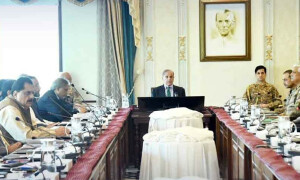When the federal government allocated Rs900 billion under FY22 Public Sector Development Program (PSDP), folks were wondering where the fiscal room would come for higher spending. Now, early on in this fiscal, the government’s intent to prime the economic pump in a short time is taking root. It is unclear whether the urgency to spend more on development is political or economic.
Latest Planning Commission data shows that roughly Rs393 billion had been authorized for release under PSDP projects as of September 3, 2021. Of the Rs900 billion budget, this translates into 44 percent of funds now approved for release by the planning folks – in a matter of just two months! This level of clearance far exceeds the 20 percent ceiling on funds release during the first quarter.
Recent public finance reforms in the fund approval and disbursement mechanisms have ensured that much of the bureaucratic red tape has been done away with, helping to fast-track PSDP-related approvals. Besides, the premier himself is said to be keeping track of development projects in priority areas, which helps to keep the ball rolling. The finance minister is also keen on utilizing PSDP to achieve high GDP growth.
Notwithstanding, Rs393 billion is a huge amount of money during the nine-week period under review. In the same time horizon, authorized funds were Rs112 billion (17% of budget) in FY21, and Rs70 billion (10% of budget) in the year before. It remains to be seen how much of the authorized funds actually get released during the quarter, as the finance ministry often weighs in to keep a lid on the deficit. Going through the list of major beneficiaries, it is clear that the spending focus is on infrastructure development projects. Among those who scored big thus far, the Finance Division leads with Rs61 billion worth of funds approved until September 3, followed by Rs57 billion for the National Highway Authority and Rs50 billion for Water Resources Division.
In just two months alone, these three bodies have been given approval for half of their yearly allocations under the FY22 PSDP. Meanwhile, the Cabinet Division has been given a green-light for almost all of its Rs46 billion development fund in a short span of time. Special Areas (AJK and GB) have been given an approval of Rs3 billion, nearly half of their annual development package.
Development funds for political constituencies have in the past been routed through finance and cabinet divisions. Due to unavailability of project-wise spending data, one cannot comment exactly where the funds are being spent. However, the inclusion of roughly Rs50 billion worth of new local-level schemes under Finance Division, besides Cabinet Division’s Rs46 billion SDG Achievement Program meant for parliamentarians’ schemes, suggest the government’s desire to increase popularity among the masses.
There is always a case for increased development spending in Pakistan. However, care needs to be exercised, considering that economic imbalances, especially on the external side, are increasing. The need is to have appropriate monetary and fiscal responses so that economic recovery is not disturbed by a runaway fiscal deficit and out-of-control imports. Otherwise, exigencies of the electoral economy will end up reducing the space for sustainable growth.


























Comments
Comments are closed.